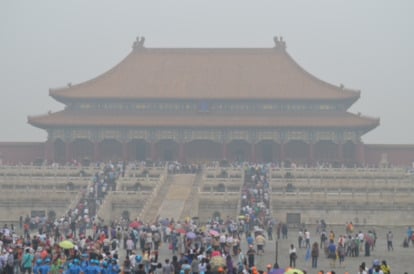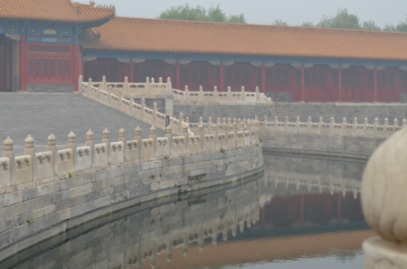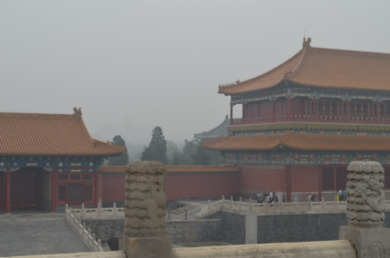by Michael Palladino
Beijing was our first stop; which up until June 1 had been a far away place that was a mystery to me and yet in the headlines and news. Why was I unaware? My first steps towards the Forbidden City changed all that.
I was struck by many things and the first was the concept of “space.” A physical distance that once denied participation now demanded it. In the expanses of the Forbidden City you have the need to contemplate; a need to pause before the grandeur of the centuries to which you bear witness.
I can remember the feeling I had at the Grand Canyon and the need to sit and allow the Canyon to reach me and for me to reach back; a sense of insignificance in the company of such a unique manifestation of nature. In the Forbidden City you can contemplate what is front of you which was once denied outside of its walls. A chance to reflect and assess, a chance to evaluate and traverse the centuries between you and the reality you are witnessing.

The Forbidden City challenges you to stop and engage in a focused moment that if you allow it, is magical. The scale of the city is overwhelming and you develop a sense of timelessness—a palpable respect for the idea of what is solidly before you. Mount Olympus came to mind, the ancient pyramids of the Mayans and the Egyptians; the remnants of the great North American peoples whose sense of civilization we never respected or acknowledged.
As an American I felt a terrible burden that needs comes with the need to explore. The people of China did not destroy this city, they allowed it to evolve and now it co-exists with their modern identity- a connection that links a people to a different time –but without judgment or remorse; a shared reality that united them in defiance of the very name—The Forbidden City.

The plan of the City is also unique in that there is more a sense of the horizontal and the dominance over the organic lack of control that is nature. The Chinese, although respectful of their surroundings spiritually, also respected and needed order and balance. Symbolism is rampant and profound in the subliminal message it had over the chaos they tried to control. Elevation meant power in a very physical sense; the ability to look down on your surroundings and your subordinates. It created an aura of power and the accompanying control over the natural world to create balance.
The use of symmetry is stunning in its scale and consistency; everything becomes a mirrored image and everything is arranged by size, shape and color. The architecture is a balance between male and female, of strength and fragility, of the very elements used in the construction. The play of earth and sky, a reflection of a belief system which is manifest in concrete terms and expressed in a universal iconography that needs no key for understanding.
The Forbidden City is about power and control; the submission of personal will to a higher power; one that is assumed as omnipresent and timeless. The need to aspire to connect with what you cannot claim as your own and yet pulls you to own it. A collective part of a historic past that united centuries ago and unites now. The Chinese people are all connected to that past and The Forbidden City is the place where that reality is indisputable.
You must go to China. You must see Beijing for yourself and then you might be able to understand how China, a country of 1.3 billion people, has prospered and will continue to do so. China demands our attention and our interest; we need to understand their story so that we can begin to understand our own.
Topics: LIM College, study abroad, China